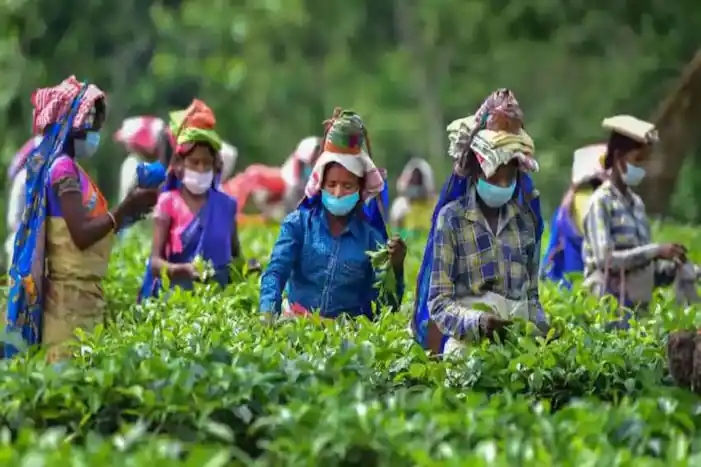
As trouble brews in Sri Lanka, Indian tea exporters smell opportunity
Indian exporters will make big gains if trade with Russia, a key buyer, gets improved with a rupee-ruble payment mechanism

Mounting economic woes in Sri Lanka, a major player in the global tea market, may provide opportunities for Indian exporters of the commodity as the island country is set to witness a significant decline in its production and shipments this year, industry stakeholders and experts said recently.
Sri Lanka produces around 300 million kg of tea annually and is predominantly an orthodox tea producer. The country exports around 97-98 per cent of its annual output, rating agency ICRA’s vice president Kaushik Das said, as quoted by a PTI report. Sri Lanka accounts for around 50 per cent, if not more, of the total global trade of orthodox tea and exports the beverage to mostly west Asian countries such as Iraq, Iran and the UAE, and North African destinations like Libya along with Russia and Turkey, he said.
“A significant fall in Sri Lanka’s tea production will have an impact on the global market and also provide an opportunity for Indian exporters to fill the gap,” Das said.
‘Orthodox tea’ refers to loose-leaf tea produced using traditional methods –plucking, withering, rolling, oxidation/fermentation and drying.
Power cuts, fuel shortages
With the growing economic crisis in the island country, tea factories are struggling to run their operations, said South India Tea Exporters Association chairman Dipak Shah, who recently returned from capital Colombo. “Almost all units in Sri Lanka are witnessing power cut for almost 12-13 hours a day and have not enough fuel to run their generators. Generally, disruption in the production process leads to a decline in quality. Apart from this, there is less rain. I think the production could fall by 20-25 per cent in our neighbouring country,” Shah said, as quoted by PTI.
Also see: How economic emergency works
He also said such a scenario could provide “much better days for Indian exporters”, particularly if trade with Russia gets improved with a rupee-ruble payment mechanism. Indian Tea Exporters’ Association chairman Anshuman Kanoria said the industry is expecting that the island country’s crop might be lower by around 15 per cent this year because of its economic condition.
“Shortages of fertiliser, diesel and other production inputs would hit its output. We have already seen international buyers, who need Sri Lankan tea for their blend, pay higher prices as tea from that country has become expensive by around 10-20 per cent,” he said.
Allegiance to Lankan tea
Both Indian and Sri Lankan orthodox teas are popular in Russia, and India’s dependence on the CIS country for the export of the beverage is significant. “The demand for Indian orthodox tea could go up with the shortage of Sri Lankan variety. However, international buyers have allegiance to Sri Lankan tea and their logo, despite the shortage of the crop,” Shah said.
Echoing Shah, Kanoria said Russia, like India, is also an important market for Sri Lanka, and traders in the neighbouring country are also facing problems in transporting the commodity to the CIS country with a dearth of containers. With the war situation, Russian buyers were out of the market for the last three-four weeks but now they are returning and this could put more pressure on prices of the Sri Lankan tea, Kanoria said.
Advantage South India
“Overall, we have already seen that South India has benefited to some degree in the last three weeks or so due to shortage of Sri Lankan tea and increased prices of their crop. There is some short-term benefit but international packers who use Sri Lanka tea in their blend are not going to replace the variety with South India in a hurry,” he said. Explaining the global market scenario of orthodox tea, Das said, apart from Sri Lanka, other major producers of the variety are China, Vietnam and Indonesia.
Also see: Sri Lanka’s way forward: What Rajapaksa’s close aide Thondaman has to say
But China hardly exports orthodox variety as it consumes a lot, he said. “India produces around 110 million kg of orthodox tea and of that 90 per cent is exported. Our tea has no competition with Sri Lanka’s high grown [high altitude] variety that contributes to around 35 per cent production. A decline in the low grown tea of the neighbouring country may help Indian exporters to expand their shipments,” Das said.
Kanoria, however, pointed out that a price rise in Sri Lankan tea does not mean that Indian exporters will benefit immensely as the crop of the island country has its own nature. Sri Lankan orthodox tea had earlier attracted much higher prices than that of Assam in many cases.
“It is not the simple replacement on the price factor. International buyers are buying what they need to keep their blend composition intact. One person’s grief should not be a cause for our benefit. India needs to devise its own strategy to expand its exports,” he said.
Asked whether North India’s tea could find more buyers due to the crisis in the neighbouring country, Kanoria said: “I do not think North India could benefit much from this situation as varieties of Assam and Bengal tea do not fit into that demand profile.”

